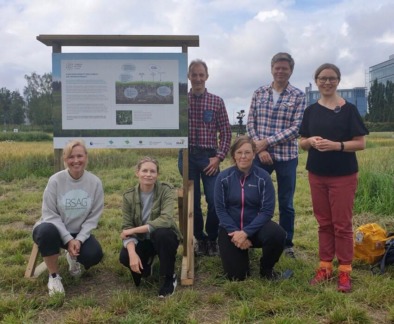FluCS Tool project
Carbon Action
Solutions for reliably quantifying carbon sequestration in soil
The main objective of this project is to develop a tool for estimating annual carbon balances and the uncertainty in greenhouse gas flux measurements in a consistent way. The tool will significantly improve the reliability and comparability of carbon sequestration estimates.
Official name
FluCS Tool – Solutions for reliably quantifying carbon sequestration in soil
Duration
2020 – 2023
Persons in charge
Henriikka Vekuri, Finnish Meteorological Institute, henriikka.vekuri@fmi.fi
Consortium
Finnish Meteorological Institute
Funder
Maj and Tor Nessling Foundation
A reliable assessment of carbon sequestration is important for combating climate change
Direct measurement of the changes in soil carbon stock is slow, laborious and expensive and has significant uncertainties due to large background stocks and high spatial variability. An alternative is to infer the soil carbon stock change from measurements of the gaseous carbon fluxes (carbon dioxide and methane) between ecosystems and the atmosphere.
The main objective of this work is to develop a multi-purpose tool for estimating the uncertainty in long-term greenhouse gas flux measurements and annual carbon balances, which could be used for a variety of ecosystems when estimating their climatic impact and finding solutions suitable for their unique environmental challenges. The end product of the project will substantially improve the reliability and comparability of carbon sequestration estimates.
Climate warming is the most severe environmental problem faced by the humankind. To be able to limit the increase in global temperature to 2 °C above the preindustrial level, we will need – in addition to strongly reducing carbon dioxide and other greenhouse gas emissions – methods to capture and remove carbon dioxide from the atmosphere to a long-term storage. Carbon sequestration in terrestrial ecosystems is the most feasible and inexpensive method to remove carbon from the atmosphere. Increasing soil carbon content can also improve soil health and thus support food security in a changing climate.
The top meter of soil contains a stock of carbon twice the stock in the atmosphere Therefore, even small changes in soil carbon stocks can have significant impacts on mitigating climate change. To make these actions an accredited solution for climate policy, the amount of carbon sequestered must be quantified reliably. Just as important is an estimate of its uncertainty, which is needed for defining confidence intervals on annual carbon budgets and making statistically valid comparisons.
Contact
Henriikka Vekuri, Finnish Meteorological Institute, henriikka.vekuri@fmi.fi




